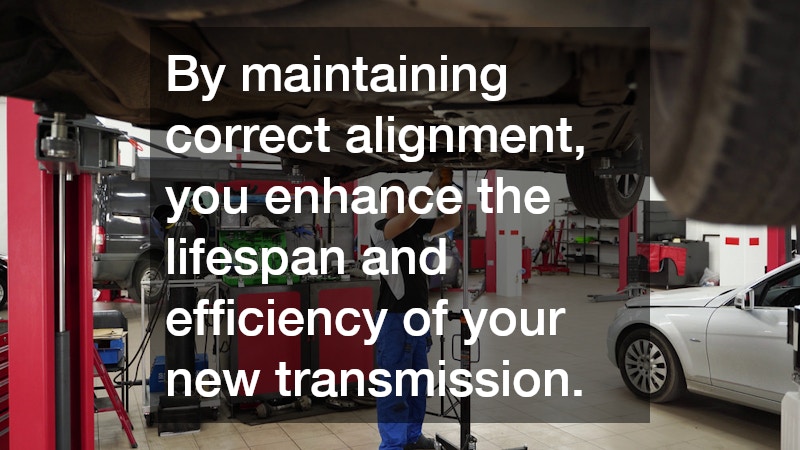Replacing a transmission can be overwhelming, but with the right guidance, it can be accomplished successfully. This article provides useful tips and tricks to help ensure a smooth and successful transmission replacement.
How Do I Identify the Signs That My Transmission Needs Replacement?
Unusual Noises
Look for grinding, whining, or clunking sounds when your vehicle shifts gears. These can be early indicators of transmission problems.
These noises are often the result of worn-out gears or internal damage that requires immediate attention.
Failing to address these unusual sounds promptly can lead to more severe issues and costly repairs. Listening to your vehicle and understanding these signs can prevent more serious damage, saving both time and money.
Moreover, ignoring these noises often results in more complicated and expensive repairs later on. Therefore, recognizing and addressing unusual noises is essential for maintaining your vehicle’s health.
Delayed or Slipping Gear Shifts
If your transmission hesitates or frequently shifts out of gear, it might be time to consider a replacement. Slipping gear shifts often indicate an underlying problem that cannot be ignored.
This slipping could lead to inefficient vehicle performance, impacting your safety and the vehicle’s longevity. It’s crucial to address these issues promptly to avoid further damage.
Early detection and intervention can prevent more extensive damage to your transmission system. Consequently, recognizing and addressing delayed or slipping gear shifts can help keep your vehicle in optimal condition.
What Should I Consider Before Replacing My Transmission?
Cost and Budget Planning
Evaluate the overall cost of transmission replacement, including parts and labor, to assure it’s within your budget. Transmission replacement is a significant investment, and understanding all associated costs is essential before proceeding.
If your vehicle will be out of commission for an extended period, consider any additional expenses, such as towing or rental cars. Planning these costs ahead of time can prevent unexpected financial burdens.
By creating a comprehensive budget, you can manage your finances efficiently and avoid any unforeseen expenses. Proper budget planning is integral to a stress-free transmission replacement experience.
Choosing Between Repair and Replacement
Weigh the benefits and costs of repairing the existing transmission versus replacing it entirely. In some cases, a repair might be sufficient and more cost-effective, especially if the damage is minimal.
However, if your transmission has extensive damage or constant issues, replacement may be the better option. A professional mechanic can help you weigh these options and make the most suitable choice.
Ultimately, your decision should align with your budget and the vehicle’s lifespan. This informed approach ensures you make the best choice for your needs.
How Do I Choose the Right Replacement Transmission?
OEM vs. Aftermarket Parts
Explore the advantages and disadvantages of using Original Equipment Manufacturer (OEM) transmission parts versus aftermarket parts. OEM parts are generally more reliable and come with a warranty, but tend to be more expensive.
Aftermarket parts, on the other hand, often offer a wider range of options and can be more affordable. However, they might vary in quality and may not offer the same reliability as OEM parts.
When selecting parts, consider the balance between cost and quality to make an informed decision. This choice will ultimately impact the performance and longevity of your transmission.
Manual vs. Automatic Transmission
Understand the differences and decide which type of transmission suits your driving preferences and vehicle needs. Manual transmissions generally provide better control and can be more fuel-efficient.
Automatic transmissions offer convenience and are typically easier to drive, especially in heavy traffic. The decision between manual and automatic should be based on your driving habits and preferences.
Your vehicle’s compatibility with either transmission type should also be a key consideration. Making an informed decision ensures your new transmission meets your specific requirements.
What Are Some Tips for a Successful Transmission Installation?
Hiring a Professional Mechanic
Consider hiring a qualified mechanic to ensure the transmission is installed correctly and efficiently. Professional mechanics have the necessary experience and tools to handle complicated installations.
Attempting a DIY installation without proper skills can lead to mistakes and further damage. Investing in a professional service can save you from potential headaches and additional costs in the future.
Relying on experienced mechanics ensures your transmission replacement is handled with precision and care. This professional assistance is key to a successful installation and long-term performance.
Ensuring Proper Alignment
Ensure that all components are properly aligned during installation to prevent any future issues. Proper alignment is crucial to avoid potential damage and ensure smooth operation.
Misalignment can cause unnecessary wear and tear, leading to premature transmission failure. Regular maintenance checks post-installation can keep alignment issues in check.
By maintaining correct alignment, you enhance the lifespan and efficiency of your new transmission. Attention to detail during installation is invaluable for avoiding future issues.
Successful transmission replacement relies on identifying the need for replacement, making informed decisions regarding parts and costs, and ensuring correct installation. By following the tips and strategies outlined in this article, you can tackle this complicated task with confidence and achieve lasting results.

